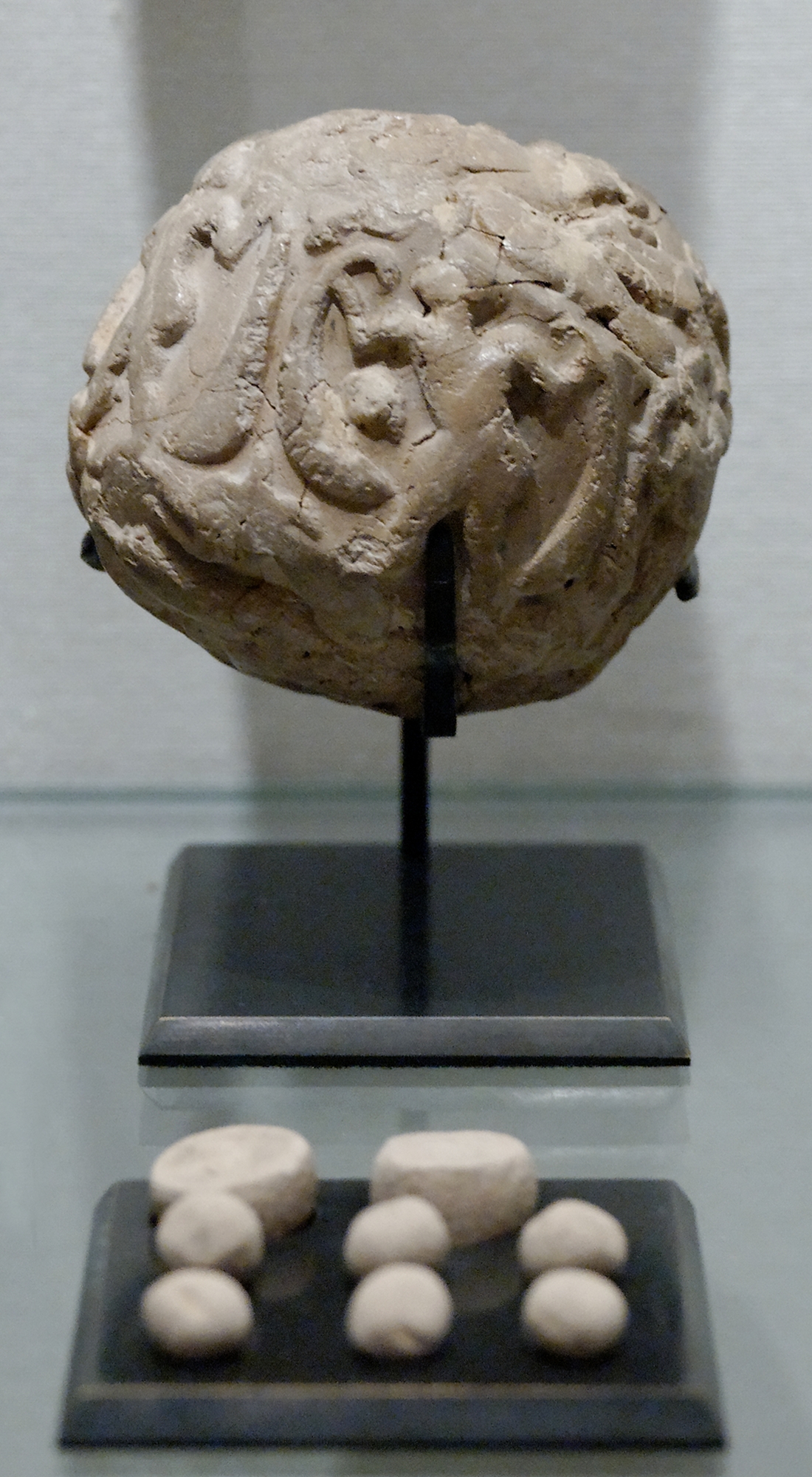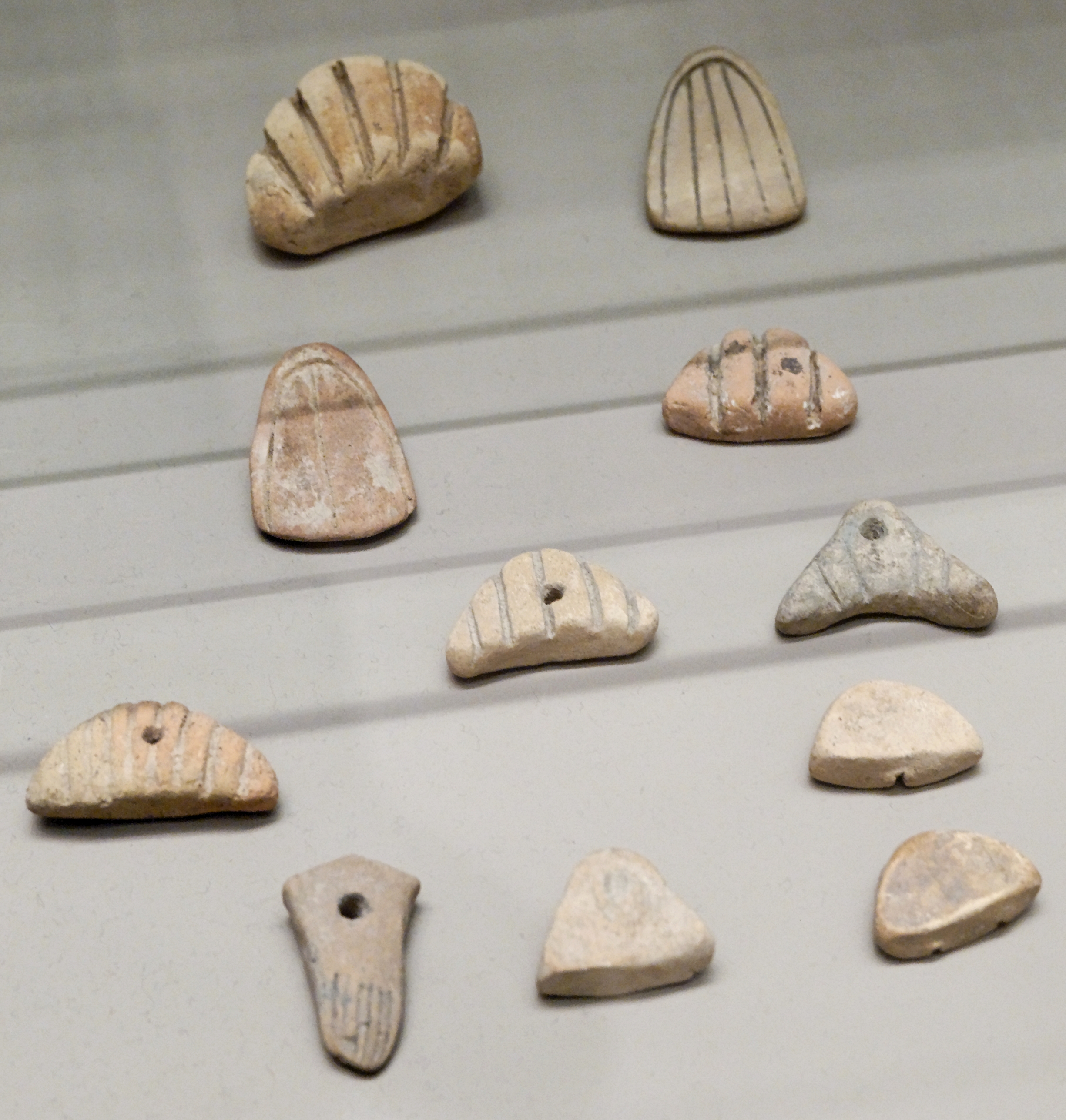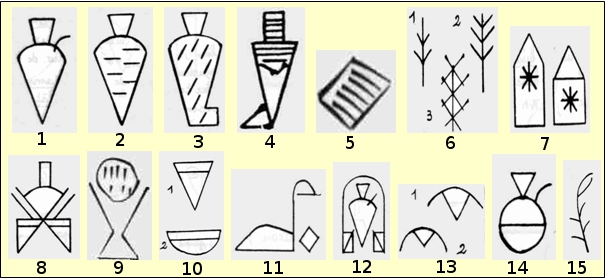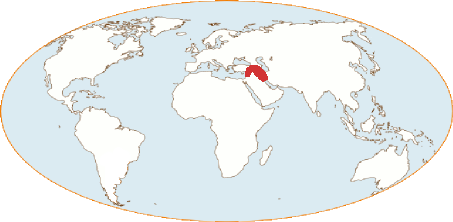The birth of writing and pictograms for the beer brewing in Mesopotamia
The urban explosion brings with it profound changes that lead to the appearance of writing in Southern Mesopotamia around 3300 BC, followed by the first proto-Elamic texts from Susiana, an adjacent eastern region. This invention was part of a multitude of economic and technical upheavals.
In just a few centuries, the population of the region increased tenfold, an exceptional demographic growth for the time. Cities such as Nippur and Uruk cover respectively 50 and 70 ha, others about 30 ha. They constitute the nodes of a territorial network hierarchically linking villages and hamlets. A slow southward migration begins, at the end of which the city of Uruk and its region concentrate, around 3200 BC, 60% of the permanent settlements. The city of Uruk covers 100 ha and will reach around 2900 BC approximatly 550 ha surrounded by defensive walls[1].
These first human concentrations in history generate powerful organisations with their means of control. Artisanal activities with small village outlets develop and specialise. These irreversible economic and political developments in turn require increased administrative coordination and supervision.
The dependence of the proto-urban dwellers on subsistence production is becoming so strong that cities are reorganising their supplies and their management of exchanges between rural production and urban crafts. The city controls a larger territory and intensifies contacts. Hamlets and villages placed themselves under its protection and that of its administrators. Writing is primarily an accounting tool to control these exchanges. Its "literary" use came much later, around 2500 BC.
| Objects from the site of Susa (Iran), Susa II period (4th millennium BC). Musée du Louvre | |||
 |
 |
 |
 |
| Clay ball with sealing imprint depicting a grain harvesting scene | Bevelled rim bowls from Susa used to provide standardised grains rations, Uruk period | Globular clay envelope with its accounting tokens | Accounting tokens (Susa) |
Around 3300 BC, the existing tools are no longer sufficient to master this growing complexity. Seals and cylinder seals, calculi and sealed bullets, digital clay tablets still carry too little informations. But these processes, first merged and later enriched by abstract operations of generation-combination of pictograms, contain the seeds of the first elements of writing.
Fig. 1 : Evolution of Sumerian pictograms over the centuries (R. Labat, Manuel d'épigraphie akkadienne 1988, p. 3)
The primitive signs are mostly pictographic, numbering about 1200, including variants and combinations, of which 60 are numerical. Around 3000 BC, a process of simplifying the graphic design began, with the general rotation of the signs by 90° to the left and the decomposition of the graphic lines into a sequence of "nails", straight cuneiform impressions adapted to the use by the scribe of the calame, a reed stick whose one end is cut into a pointed triangle to write on the fresh clay (Fig. 1).
These pictograms schematise objects from the real world (grains, vessels, beer jar or vat, fish, birds, mountain, plough, star, head, ...) according to simple procedures: complete representation of the object, part given for the whole (typical head for the whole animal), schematisation (field, town, enclosure, ...), pure convention (sheep=cross in a circle).
By derivation, association of meaning or abstraction, some pictograms evolve to signify an action or an idea. The head will evoke the mouth, the action of eating or drinking, finally the speech and the shout. The star also designates the divine, the sacred, until later becoming the sign marking the names of deities. The Sumerians use all means of pictorial creation to generate and manipulate a wide range of meanings (concrete objects, qualities, actions, ideas) and grammatical abstractions.
In this vast repository, a few dozen pictograms refer to the brewery, the various brewing ingredients, the types of beers and the vessels to serve them (Fig. 2).
Fig. 2 : archaic sumerian pictograms related to the brewing and service of the beer.
The beer and the beer jar are one and the same sign, a vase profile with a pointed bottom and flared neck. A straight or curved line emerges from the right shoulder, which may represent either a spout or a tube dipped into the jar to suck up the contents (Fig. 2, no. 1, Fig. 5, no. 2-3). This very old figure is shown on Uruk labels dated 3100 BC[2].
This pictogram-matrix of a beer-jar is telling us :
- the pairing of the beer jar with beer storage and beer dispensing. The jar refers to the beer-ration in the manager's storehouse rather than the beer-brewed by the brewer's hands. The first scribes were more grain accountants than brewer-technicians, as in Egypt. This pictogram is commonly written on archaic clay tablets which register the distributions of grain, bread and beer. The jar is taken as the unit of the rations granted (counted whole or by fraction 1/3 or 2/3). The scribes chose the beer jar to mean beer. It cannot be excluded that this pictogram has been modelled on a domestic beer jar device in which the beer would be directly brewed.
- the pointed bottom allows it to be placed on a perforated support or half sunk in the ground. This reinforces the idea of an often handled jar, with a small capacity (5 to 20 litres maximum), neither too heavy nor too fragile.
- the flared neck makes it easy to fill in. Emphasis is placed on the re-use of the container which can be used as a fermenting jar.
- the pouring spout or drinking tube evokes the final step: pouring the beverage, or better still sucking the beer it in to avoid opening the jar and stirring its contents.
- Different ways of hatching the inside of the jars indicate beers of different grades (Fig. 2, n° 2, n° 3-4).
We have a shard from the ancient city of Jemdet-Nasr, fragment of the neck of a jar containing 25-30 litres and dated to about 3000 BC[3]. The sumerograms DUG=pot/jar and KAŠ=beer are inscribed. By marking the jar with the signs of the container and the contents, the scribe did not double the meaning. DUG means jar-of-ration and KAŠ ration-of-beer. This hybrid nature of beer (fermented beverage + ration) will long mark the Mesopotamian accounts. Jars of beer will be counted to monitor the storage and distribution of the beer-ration, but volumes of grain and beer will be calculated to control their ratios and thus attribute to each social category the agreed grade of beer-ration. Beer is not only a fermented beverage of a food nature. It also serves as a marker of social differences. The quality of beer-ration is measured by the volume of grains used to brew the same volume of beer on a scale from 1 to 3, which can be calculated today using these accounting tablets. Three times as many grains to brew the same volume of beer means a beer that is three times stronger, tastier and more alcoholic.
The second group of pictograms represents the BAPPIR, i.e. the beer-bread. This ancient and fundamental ingredient of the Mesopotamian brewer (Fig. 2 No. 3-4) consists of ground grains mixed with plants. They are pre-baked in the shape of ready-to-use breads. The brewer only needs to soak them. Here again, the jar replaces the ingredient. The instructions for use of BAPPIR remain inseparable from the container in which the fermented beverage is processed. The basal protuberance is probably a drain hole. One of the pictograms (no. 3) also means ŠIM, aromatic plants in general which include resins, gums and scents, and whose role in brewing and in the composition of BAPPIR will be further explained.
The cereal cake cooked and used directly in brewing is also a major ancestral beer brewing ingredient (Fig. 2 n° 5), made from barley or wheat (Fig. 2 n° 6 = ŠE). Sumerian beers are not 100% malt, far from it.
Malt is conspicuous by its absence in this list. It appears on archaic clay tablets, but is counted as the raw grain. This can be explained by the fact that grains of barley or wheat take up the same volume whether they are raw or malted. Malt is designated on the accounting documents by a specific numerical system with which the scribe takes note of the volumes of malt. For him, 1 volume of raw grain = 1 volume of malt. Hulled raw grains and malt grains are equivalent from a strict accounting point of view. This rule does not apply to raw, unhusked grains. Raw emmer wheat, with its adhering glumes, is of course more voluminous than husked emmer wheat.
Some pictograms combine and symbolize essential ingredients of the brewing process. This is the case of the pictogram AMA= mother (Fig. 2 n° 7). Associated with ŠIM = aromates, or ŠIM+GAR, it gives AGARIN4-5 (akkadien agarinnu), the beer wort and especially the leaven to transform this wort. This means that at the end of the 4th millennium, the Mesopotamians perfectly identified the material that triggers the fermentation of beer[4].
The sumerogram of the fermentation vat support is very old (Fig. 2 n° 8=KAN). The pictogram n° 9 shows a patty immersed in a vase, an important brewing operation (soaking).
The two pictograms in Fig. 2 No. 10 mean ration or bread, and also represent the sumerogram NI which, composed with DUR-BUR, designates the fermentation vat (akkadian namzitu).
The sign MUD (Fig. 2 n°11) means tube, drinking tube. ŠAKAN (Fig. 2 n°12) means the jug whose design derives from the beer jar. SIK represents weakness (Fig. 2 n° 13) and, gradually, light beer (akk. našpu).
Finally, the Sumerian notes UKKIN = assembled by that big belly jar (Fig. 2 n° 14). Half full (or empty), with a drinking tube, it symbolises the meeting around a jar of beer, the idea of an assembly or a council. This pictogram attached to GAL (big, important, chief), means head of the assembly and, more concretely, "he who provides and offers the beer". The drinking tube derives from the reed from which it is made (n° 15 + Fig. 1).
[1] Gigantic surface area compared to the symbolic megacities of the ancient world: Athens=25 ha (500 BC), Jerusalem=10 ha (50 AD). The city of Rome (1100 ha under Hadrian in 100 AD) is only twice as large as Uruk some 3 millennia earlier! (Hans Nissen 1988, The Early History of the Ancient Near East 9000-2000 B.C., p 72). Uruk covers the average surface area of a Parisian district (Paris = 10,540 ha/20=527 ha).
[2] Krystyna Szarzynska 1994, Archaic Sumerian Tags, Journal of Cuneiform Studies 46, p. 3, 10 label no 8. And K. Szarzynska 1993, Offerings for the Goddess Inana in Archaic Uruk, p. 11 Table 1.
[3] R. K. Englund et J-P. Grégoire 1991, The Proto-cuneiform Texts from Jemdet-Nasr, Materialien zu den frühen Schriftzeugnissen des Vorderen Orients 1, p. 9 et n° 244
[4] Evidently, the Mesopotamians know nothing about yeasts. The yeast (agarinnu) that they handle is recovered at the bottom of the jars or on the foam during full fermentation. This leaven is a combination of different microorganisms (yeasts, bacteria, etc.) and organic matter (proteins, cell debris, grain waste, etc.). However, Mesopotamia inhabitants were fully aware of the phenomena generated by yeasts.




